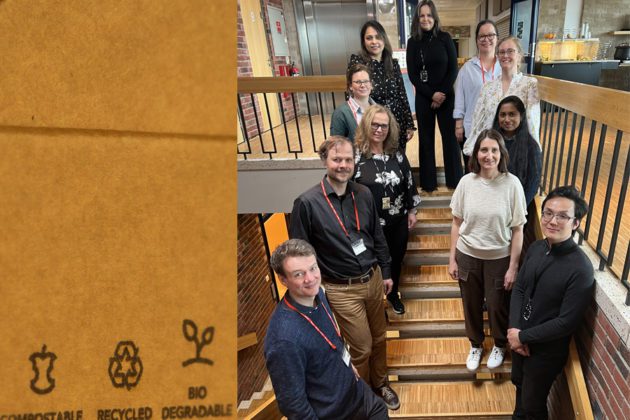More food packaging based on cellulose fiber

Over 60 percent of European consumers believe that food packaging made of cardboard and paper is more environmentally friendly than plastic alternatives. In the newly started research project ReFiberPack, the goal is to develop fiber-based packaging solutions that could reduce the negative environmental impact of the packaging without sacrificing its recyclability and the food quality.
There are several challenges with using cardboard- and paper-based packaging for food products. One challenge is that fiber-based materials tend to absorb water existing in many food products, which leads to the deterioration of both the packaging and the food products.
In the ReFiberPack project, Nofima scientists will develop and evaluate new recycled fiber-based packaging solutions for both chicken fillet and potato chips. The scientists from Norsus will investigate whether the new solutions can contribute to reducing carbon emissions.
Fiber-based packaging is attractive
For several food products, fiber-based packaging solutions have already been developed which have one or more layers of plastic, so-called barriers. The problem is that this type of combined material is difficult to recycle.
– We know that fiber-based packaging with removable plastic layers have become more popular, but we also know that consumers would prefer to sort the packaging as a whole piece, and not have to separate the different parts. This is important to keep in mind in our further work, says senior scientist Marit Kvalvåg Pettersen at Nofima.
We must understand the consumers’ preferences and behavior related to sorting and how we can, based on this knowledge, find solutions that enable the materials to be properly sorted and recycled. This is an important goal of this project, in addition to developing new packaging solutions based on recycled fibers and removable barrier layers.
Starts with investigating possible packaging materials and barriers
The scientists and packaging producers will first identify which types of recycled fibers are potentially suitable for food packaging applications. They will then develop and assess new barrier layers and methods to attach them on top of the fiber-based material.
The next step is to develop various prototypes of recycled fiber-based food packaging tailored for potato chips and fresh chicken fillet. The scientists and food producers will then test whether the new packaging solutions could ensure a good quality and shelf-life of the food products.
– Our goal is to enable the use of recycled cellulose fibers for packaging food products that require good protection, without at the expense of the next recycling of the materials, says scientist Kloce Dongfang Li at Nofima. He leads the work on developing the prototypes.
Can we get consumers to sort and separate?
When the new packaging is developed, it is crucial to examine the consumers’ attitudes.
– We have previously investigated consumers’ attitudes to recycling, and around half of the population do sort the packaging waste, while 45% are unsure of how different packaging should be sorted. We have also asked consumers to answer which properties of the packaging material are important. High on the list is that the packaging can be sorted as a whole, so that they do not have to separate the packaging into different parts. Other desired material properties are that the packaging should be fiber-based, preferably from recycled sources, and could be recycled again, says senior scientist Valérie Almli at Nofima.
She adds that there are big differences between different consumer groups. In ReFiberPack, the scientists will investigate whether the willingness to separate the packaging into different parts is greater in certain consumer groups, and whether it is possible to “nudge” the consumers to do the separation.
Facts about ReFiberPack
The research project is financed by the Research Council of Norway. The aim is to develop new and recyclable food packaging based on recycled cellulose fibers and removable barriers, so that these two parts can be sorted separately and recycled. The new solutions will enable the use of recycled cellulose fibers for high-value food contact packaging applications without compromising their subsequent recycling.
The project is led by Nofima. Other partners are Norsus (research partner), Grønt Punkt Norge, Norsk Kylling, Sørlandschips, Borregaard, as well as Ranheim Paper & Board.
The project’s full name is Recyclable food contact packaging based on recycled fiber and removable barrier.
Facilities
Contacts
Research areas
Packaging solutions
Topics
Packaging materials

